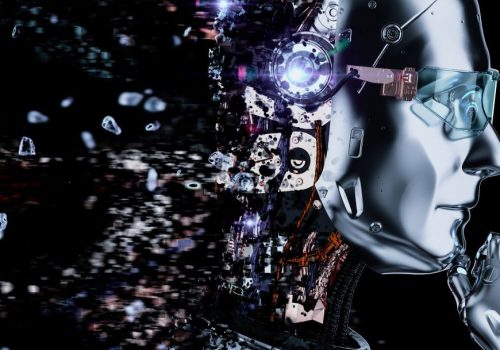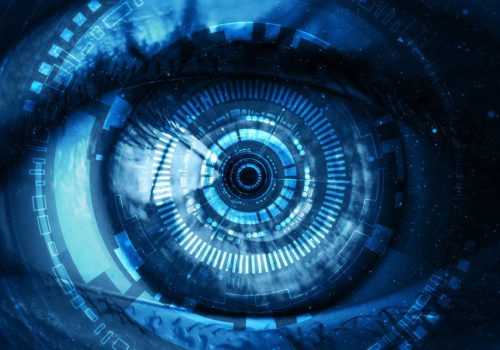In an age where digital security is paramount, quantum computing poses both a groundbreaking opportunity and an unprecedented threat. With the ability to solve complex problems at speeds unimaginable to classical computers, quantum technology could transform industries such as healthcare, artificial intelligence, and finance. However, its most immediate and profound impact may be in cybersecurity. The encryption methods that currently safeguard global communication, banking transactions, and classified government data could become obsolete overnight. The question is no longer if quantum computing will disrupt cybersecurity but when—and whether we will be ready when it does.
This article explores the rise of quantum computing, its implications for cybersecurity, and the strategies being developed to mitigate the risks before it’s too late.
Understanding Quantum Computing
Traditional computers process information in binary form—using bits that are either 0 or 1. Quantum computers, however, leverage quantum bits (qubits), which, through the principles of superposition and entanglement, can exist as both 0 and 1 simultaneously. This enables quantum machines to perform parallel calculations at an exponential scale, making them exceptionally powerful for tasks like optimization, cryptography, and molecular simulations.
The Quantum Leap: How Quantum Computing is Reshaping Industries
Quantum computing is no longer just a futuristic concept—it is rapidly becoming a transformative force across multiple industries. This revolutionary technology has the potential to solve problems that were previously considered unsolvable, unlocking new opportunities in various sectors.
- Cybersecurity and Cryptography– Both a major risk and an opportunity, quantum computing threatens current encryption while enabling quantum-safe security solutions.
- Drug Discovery and Healthcare– Simulating molecular interactions at an atomic level could accelerate the discovery of treatments for diseases like cancer and Alzheimer’s.
- Artificial Intelligence and Machine Learning– Quantum computers can process vast datasets simultaneously, improving AI models, pattern recognition, and decision-making capabilities.
- Financial Modeling and Risk Analysis– Banks and investment firms can leverage quantum computing for risk management, fraud detection, and portfolio optimization.
- Logistics and Optimization– Quantum algorithms can revolutionize supply chain management, traffic optimization, and energy distribution, leading to increased efficiency and cost savings.
Cracking the Code: How Cryptography Keeps the Digital World Secure
In an age where nearly every aspect of life is connected to the Internet, cryptography stands as the invisible shield protecting our most sensitive information. From securing online banking transactions to encrypting private messages, this complex science ensures that data remains confidential, authentic, and untampered with.
At its core, cryptography transforms readable information into an unreadable format using mathematical algorithms, making it accessible only to those with the proper key to make it readable again. The two primary methods of encryption—symmetric and asymmetric—play a crucial role in digital security. Symmetric encryption relies on a single key for both encoding and decoding, while asymmetric encryption uses a pair of keys: one public for encrypting and one private for decrypting. These techniques safeguard everything from personal passwords to government intelligence, ensuring that sensitive data doesn’t fall into the wrong hands.
However, cryptography is locked in a constant arms race with cyber threats. As hackers develop more advanced methods to break encryption, security experts work tirelessly to stay ahead. Now, the rise of quantum computing presents an even greater challenge—its immense processing power could potentially break traditional encryption in seconds. To counter this, researchers are racing to develop quantum-resistant cryptography, a new frontier in cybersecurity that could redefine digital security for the next era of technology.
As we move deeper into a digital world, cryptography remains more vital than ever, working behind the scenes to keep our data safe. While most people never see the complex calculations at play, they rely on them every day—whether logging into an email account, making an online purchase, or simply sending a text. In the battle for digital security, cryptography is the unsung hero, ensuring that privacy remains a fundamental right in the modern age.
The Future of Digital Security: How Public Key Infrastructure Faces the Quantum Challenge
Public Key Infrastructure (PKI) has long been the backbone of secure digital communication, providing a trusted framework for encryption, authentication, and data integrity. At its core, PKI relies on asymmetric encryption, a system in which each user or organization has a public key, which can be freely shared, and a private key, which must be kept secret. This dual-key mechanism ensures that sensitive information remains confidential and that online interactions remain secure.
Today, PKI plays a critical role in web security, particularly in the form of SSL/TLS certificates, which encrypt data exchanged between a user’s browser and a website to prevent unauthorized access. It also powers digital signatures, enabling individuals and organizations to verify document authenticity in emails, contracts, and financial transactions. Beyond the web, enterprises rely on PKI for multi-factor authentication, secure access to corporate networks, and identity verification across industries such as banking, healthcare, and government.
Yet, while PKI is one of the most trusted security mechanisms in use today, it faces an existential challenge: the rise of quantum computing. The security of widely used cryptographic systems, including RSA and elliptic-curve cryptography (ECC), is based on the difficulty of factoring large numbers or solving discrete logarithms—problems that classical computers struggle to crack within a reasonable timeframe. However, quantum computers, leveraging the immense computational power of quantum bits (qubits), could change this reality.
Shor’s algorithm, a quantum algorithm developed in 1994, presents a fundamental threat to public-key cryptography. It can efficiently solve both the integer factorization and discrete logarithm problems, meaning that once sufficiently advanced quantum computers become available, they could break widely used encryption protocols with ease. This would compromise the security of everything from encrypted emails to secure web browsing, potentially rendering today’s PKI systems obsolete.
To address this looming threat, researchers are racing to develop post-quantum cryptography (PQC), encryption methods designed to withstand quantum attacks. Governments, technology firms, and cryptographic experts are working together to create quantum-resistant algorithms that will secure digital communications in the post-quantum era. As quantum computing continues to advance, organizations must stay ahead of the curve, ensuring that the security foundations of the digital world remain intact for the future.
The ‘Harvest Now, Decrypt Later’ Strategy
A particularly concerning threat associated with the rise of quantum computing is the “harvest now, decrypt later” approach. In this scenario, many lawful and unlawful organizations collect and store encrypted data with the anticipation that they will be able to decrypt it once quantum capabilities become available. This strategy poses significant risks, especially for data with long-term sensitivity, such as personal health records, financial information, or classified government communications. The possibility that today’s encrypted data could be exposed in the future underscores the urgency of developing and implementing quantum-resistant cryptographic solutions.
Developments in Post-Quantum Cryptography
In response to the looming threats posed by quantum computing, researchers have been diligently working on developing post-quantum cryptography (PQC) algorithms designed to withstand attacks from both classical and quantum computers. The U.S. National Institute of Standards and Technology (NIST) has been at the forefront of this effort. After a rigorous multi-year evaluation process, NIST released its first three post-quantum cryptography standards on August 13, 2024:
- FIPS 203: Based on the CRYSTALS-Kyber algorithm, now termed ML-KEM (Module-Lattice-Based Key-Encapsulation Mechanism), intended for general encryption.
- FIPS 204: Utilizing the CRYSTALS-Dilithium algorithm, now called ML-DSA (Module-Lattice-Based Digital Signature Algorithm), for digital signatures.
- FIPS 205: Employing the Sphincs+ algorithm, now referred to as SLH-DSA (Stateless Hash-Based Digital Signature Algorithm), also for digital signatures.
These standards represent significant milestones in preparing for a quantum-resistant future, providing a foundation for developing and implementing cryptographic systems that can withstand the computational power of quantum computers.
The State of Quantum Computing: Breakthroughs and Challenges Ahead
Quantum computing is rapidly evolving, with major technology companies making significant strides in recent years. These advancements are pushing the boundaries of computation, bringing us closer to a future where quantum machines could solve problems far beyond the reach of classical computers.
Among the key players, Amazon has introduced Ocelot, a prototype quantum chip designed to reduce quantum computing errors by up to 90%, marking a crucial step toward more stable and practical quantum machines. Google has made headlines with Willow, a 105-qubit superconducting processor that achieved a major milestone in quantum error correction—one of the field’s biggest hurdles. Meanwhile, Microsoft has developed the Majorana 1 chip, leveraging unique quantum properties to advance next-generation computing technologies.
Despite these remarkable breakthroughs, the reality of commercially viable quantum computers remains on the horizon. Experts estimate that functional quantum machines capable of breaking modern cryptographic systems could still be 10 to 20 years away. The road to practical quantum computing is filled with significant technical challenges that must be overcome before these systems can be deployed on a large scale.
The Hurdles on the Path to Quantum Supremacy
While quantum computing promises revolutionary applications, several critical limitations continue to slow its progress:
- Hardware Constraints: Quantum computers operate under extreme conditions, requiring near absolute zero temperatures and highly controlled environments to maintain qubit stability.
- Quantum Decoherence: Qubits, the building blocks of quantum processors, are highly fragile and prone to losing their quantum state due to environmental disturbances, leading to computational errors.
- Error Correction Challenges: Unlike classical computers, quantum machines require sophisticated quantum error correction techniques, which are still in the early stages of development.
- Scalability Issues: Current quantum computers have only a few hundred qubits, while real-world applications may require millions of stable qubits to unlock their full potential.
As researchers continue to refine hardware, improve error correction, and develop scalable architectures, the quantum era is inching closer. While we may not yet have fully realized quantum computing’s transformative power, each new breakthrough brings us closer to a future where it could revolutionize fields such as cryptography, artificial intelligence, and materials science. The race is on, and the next decade will determine how soon quantum computers will reshape our digital world.
Securing the Future: Proactive Measures for the Quantum Era
As quantum computing continues its rapid evolution, organizations must take decisive steps to safeguard their digital infrastructure from future threats. While fully operational quantum computers capable of breaking classical encryption are still years away, the time to prepare is now. Cybersecurity experts warn that adversaries may already be harvesting encrypted data with the intent to decrypt it once quantum technology matures—the strategy mentioned as “Harvest Now, Decrypt Later.” To stay ahead of this looming challenge, businesses, governments, and security professionals must adopt proactive defense strategies.
Key Steps to Quantum-Resistant Security
- Assessing Vulnerabilities – Organizations must conduct thorough risk assessments to identify cryptographic systems that could be compromised by quantum attacks. This includes evaluating all encryption-dependent infrastructure, from secure communications to financial transactions.
- Adopting Post-Quantum Cryptography (PQC) – Transitioning to quantum-resistant encryption standards is a critical step. Governments and industry leaders are already working on standardizing PQC algorithms to ensure a seamless shift once quantum threats become imminent.
- Implementing Hybrid Cryptographic Solutions – A gradual transition can be achieved by combining classical and quantum-resistant encryption methods, allowing organizations to maintain security while preparing for a post-quantum world.
- Strengthening Key Management – As quantum computers threaten current key sizes, organizations must reinforce their cryptographic key management strategies. Increasing key lengths, leveraging hardware security modules (HSMs), and regularly rotating encryption keys will help mitigate risks.
- Mitigating ‘Harvest Now, Decrypt Later’ Risks – Long-term sensitive data, such as financial records, healthcare data, and classified government communications, should be encrypted with quantum-resistant methods today to prevent future decryption by quantum adversaries.
- Encouraging Global Collaboration – Addressing quantum security challenges requires alignment with industry-wide security standards and government initiatives. International collaboration between tech firms, cybersecurity experts, and policymakers will be crucial in establishing a unified approach.
- Investing in Research and Development (RandD) – Innovation in cybersecurity must keep pace with advancements in quantum technology. Research efforts should focus on quantum-resistant encryption, quantum key distribution (QKD), and AI-driven cybersecurity defenses.
- Educating Cybersecurity Professionals – Organizations must invest in training security teams on quantum cryptography, risk mitigation, and secure migration strategies. Preparing cybersecurity professionals now will help ensure a smooth transition when quantum-safe encryption becomes the new standard.
As we stand at the precipice of the quantum era, the choices we make today will set the foundations for the security of our digital future. The potential of quantum computing is immense, but so are its risks—particularly for the cryptographic foundations that protect our data, privacy, and critical infrastructure. While the full realization of quantum threats may still be years away, the time to act is now. Governments, businesses, and individuals must prioritize quantum-resistant security measures, invest in post-quantum cryptography, and remain vigilant as this technology evolves. The quantum revolution is not just about computing power—it’s about ensuring that our digital world remains safe in the face of unprecedented change. The question is not if quantum computing will impact cybersecurity but whether we will be ready when it does.
Quantum computing is inevitable, and so is its impact on cybersecurity. Organizations that begin their transition to quantum-safe security today will be better protected against the disruptive changes ahead. The time to act is now.









